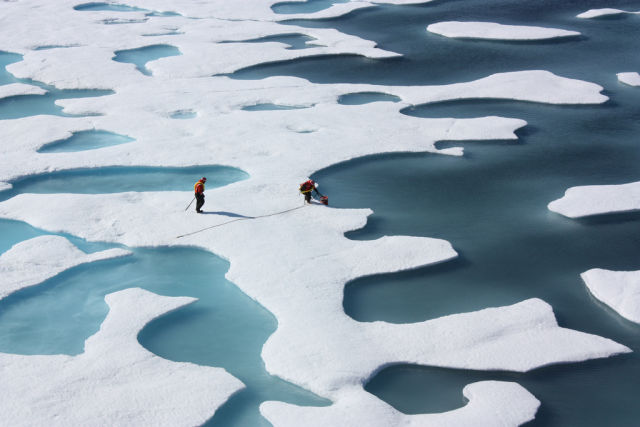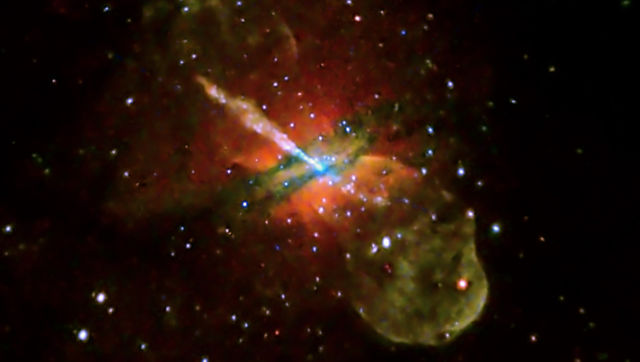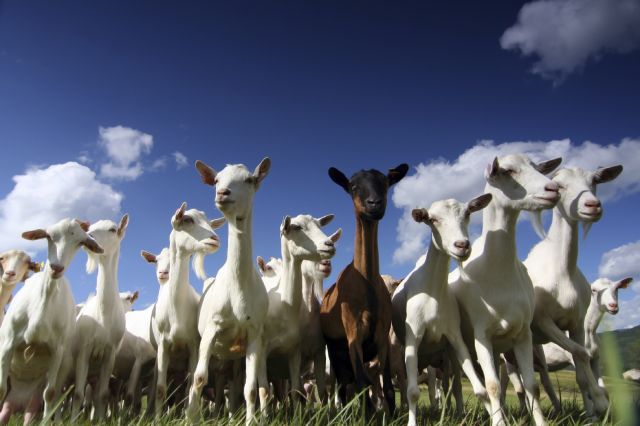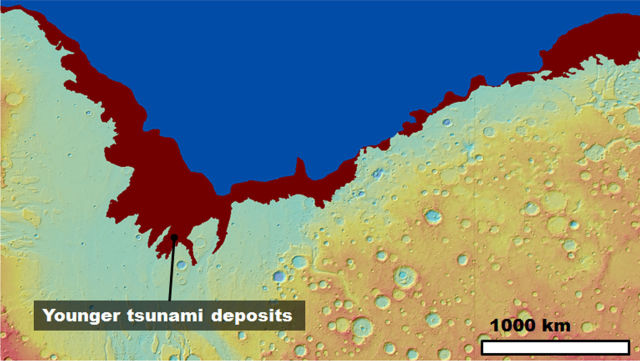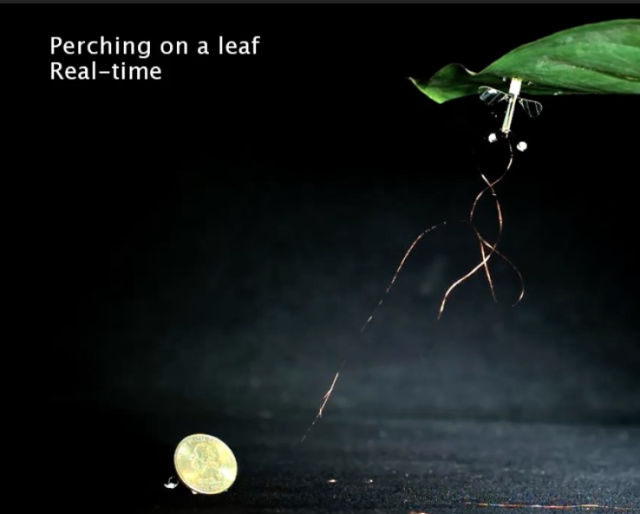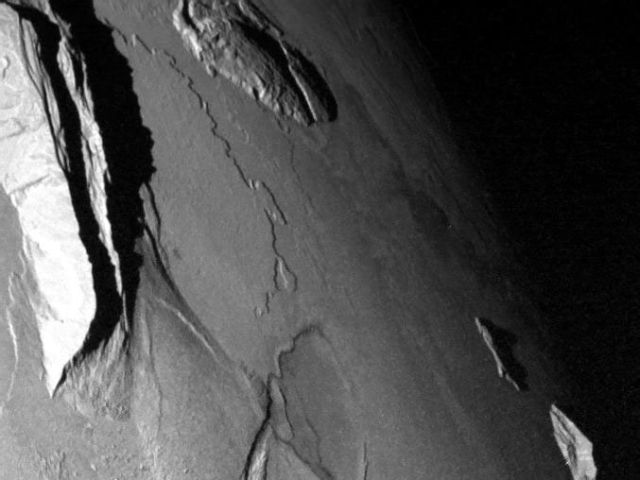
Some of the strange features in Sputnik Planum. (credit: NASA/JHUAPL/SWRI)
The stunning images returned from New Horizons' flyby of Pluto revealed a tremendous amount of information about the dwarf planet's features. That's been followed with the long, hard slog of trying to figure out how these features got there. One of the most striking things that needs an explanation is the apparent youth of Pluto's surface, as some areas appear to be crater-free, including the huge area called Sputnik Planum.
Now, researchers are offering an explanation for Sputnik Planum's apparent youth. Two papers in this week's edition of Nature indicate that radioactivity from Pluto's core would be sufficient to power convection of nitrogen ice. But the huge volume of ice involved creates another mystery, as it appears that almost all of Pluto's inventory of this element somehow ended up in Sputnik Planum.

Sputnik Planum, the white plains to the left of center in this view. (credit: NASA/Johns Hopkins University Applied Physics Laboratory/Southwest Research Institute)
Here on Earth, nitrogen is a gas making up the majority of our atmosphere. Those who have spent some time in a lab may be familiar with its liquid form, used for things that have to be cooled well below environmental temperatures. But on Pluto, it's typically cold enough—about 35K—that the majority of the dwarf planet's nitrogen is in solid form. This nitrogen ice has a couple of unusual properties. One is that it's much denser than water ice, which would allow the equivalent of icebergs to float on its surface. The other is that, since it's not held together by strong interactions among nitrogen molecules, it's relatively easy to deform.

